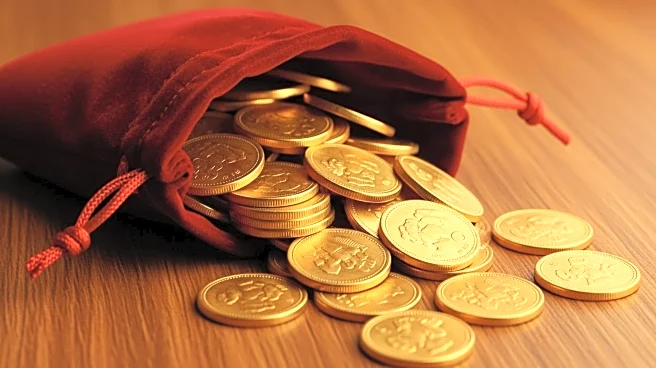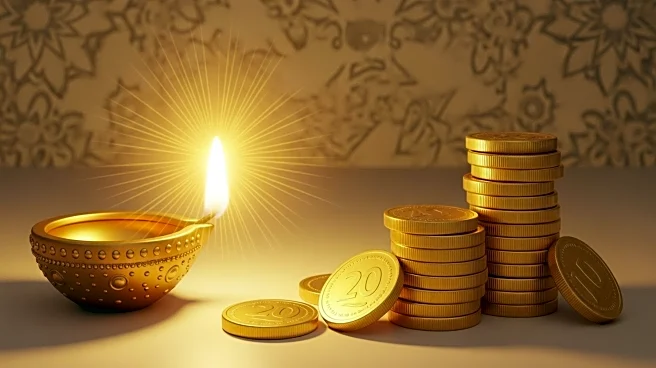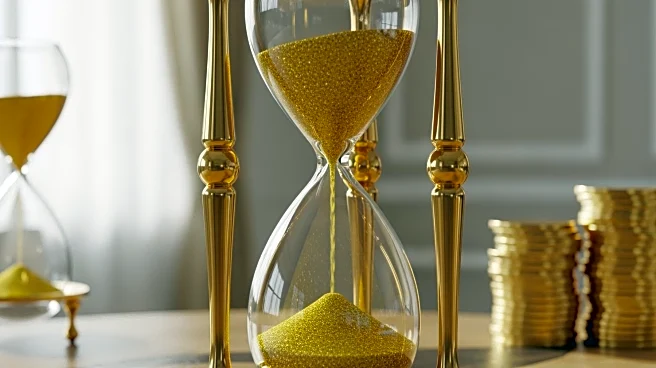What's Happening?
Gold prices have reached unprecedented levels, with the price per ounce surpassing $4,300 in October 2025. This surge has significantly impacted consumer behavior in India, particularly during the Dhanteras festival, which marks the beginning of the Diwali
festival of lights. Traditionally, this period is one of the busiest for gold purchases in India, the world's second-largest consumer of the metal. However, due to the soaring prices, there has been a noticeable shift in consumer preference from gold jewellery to coins and bars. According to industry officials, overall gold sales volumes during Dhanteras were down by 10-15% compared to the previous year, although the total value of sales increased due to the higher prices. The demand for gold jewellery specifically saw a decline of nearly 30%, while coins and bars experienced a surge in popularity.
Why It's Important?
The shift in consumer behavior in India due to record gold prices highlights the broader economic implications of fluctuating commodity prices. As gold prices rise, consumers are forced to adjust their purchasing habits, which can have significant impacts on the jewellery industry. This trend also underscores the potential for increased investment in gold as a financial asset, as consumers seek to capitalize on the metal's rising value. The situation in India could serve as a bellwether for other markets, indicating how global economic conditions and commodity prices can influence consumer behavior and industry dynamics. Additionally, the increased demand for coins and bars over jewellery could lead to changes in manufacturing and retail strategies within the gold industry.
What's Next?
As gold prices continue to remain high, it is likely that the trend of purchasing coins and bars over jewellery will persist, especially during festive and wedding seasons. The jewellery industry may respond by offering discounts on making charges to attract buyers back to traditional jewellery purchases. Furthermore, the ongoing price rally could lead to increased investment in gold and silver exchange-traded funds, as investors seek to benefit from the high returns associated with precious metals. The situation will require close monitoring by industry stakeholders to adapt to changing consumer preferences and market conditions.
Beyond the Headlines
The current scenario also raises questions about the long-term sustainability of high gold prices and their impact on consumer behavior. If prices remain elevated, it could lead to a permanent shift in how consumers view gold as an investment versus a luxury item. This could have cultural implications, particularly in countries like India where gold jewellery holds significant traditional and ceremonial value. Additionally, the increased focus on coins and bars may influence the global supply chain and production processes within the gold industry.














